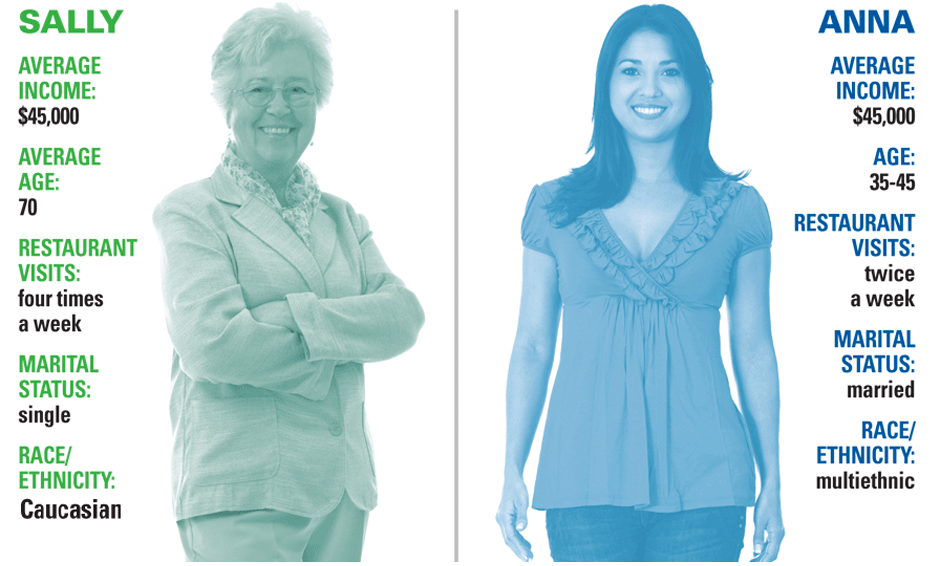![]() 2020 Vision is NRN's special report on the future of foodservice. Find out how the restaurant business will change in seven years >>
2020 Vision is NRN's special report on the future of foodservice. Find out how the restaurant business will change in seven years >>
Today’s restaurateurs are paying close attention to the spending habits of Millennials and baby boomers, and those consumers will still be the most influential diners in 2020 — albeit a bit more grown up.
Meet Anna and Sally, two key consumers of 2020 with very different characteristics.

Anna is a 35-year-old married mother of one, representing today’s Millennials, or those born between 1982 and 2001. In 2020 Millennials over age 25 will represent about 19 percent of the U.S. population.
Anna is multiethnic, perhaps part Hispanic, and her children are likely to be even more racially and ethnically mixed. She works full time. She does not live in the suburbs. She will probably always live in a big city, and her family will only have one car, forcing her to rely heavily on public transportation.
Anna will be in the middle-income group, earning about $45,000 per year in today’s dollars. Her income will not have gained much ground in real terms over seven years, but because she is well-educated, she has hope for improved earnings down the road. Anna is “recession trained” in that value will play a key role in her decision making. She will seek out coupons and deals because her discretionary income is limited, but she won’t stop dining out altogether.
Equally influential will be the older diners, such as Sally, a 70-year-old Caucasian, who is an active, independent grandmother. She represents the vast population of aging baby boomers, born between 1946 and 1964, who will start turning 70 at a rapid pace in 2016.
Sally is part of a declining population group for obvious reasons. Today, there are 80 million boomers, but by 2020 there will be 76 million. Still, Sally represents a consumer group with money to spend eating out.
Sally is a widow. She lives alone, but she is very active with her grandchildren. She eats out with them a lot — and brags about it to her friends. Like Anna, Sally’s household income is about $45,000 in today’s dollars, but that represents a drop of income after age 65. Unlike Anna, however, Sally will have discretionary income. Sally’s house is paid for, and she doesn’t have to feed a family every day. Sally will be looking for opportunities to socialize in restaurants, but she doesn’t like loud dining rooms or those with multiple TVs — the very aspects that Anna finds exciting.

— Lisa Jennings
Sources: U.S. Census Bureau; forthcoming book “The Demographics of Demand: 2014 to 2020” (Paramount Market Publishing inc.) by Peter Francese; AlixPartners LLP
